Building & Bylaw ServicesCorporate Services Current PlanningDrinking Water & Watershed ProtectionEconomic DevelopmentEmergency ServicesEnergy & SustainabilityGIS/MappingLong Range PlanningParksRecreationRegional TransitSolid Waste and RecyclingWastewater ServicesWater & Utility ServicesServices by Others
Projects
>
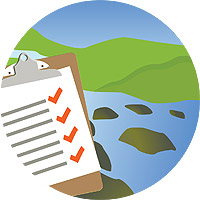
There are 7 guiding programs within the Action Plan that all of our projects and initiatives fit under:
P1 Public awareness and involvement
P2 Water resources inventory and monitoring
P3 Management of land use and development
P4 Watershed management planning
P2 Water resources inventory and monitoring
P3 Management of land use and development
P4 Watershed management planning
P5 Management of water use
P6 Management of water quality
P7 Climate Change
P6 Management of water quality
P7 Climate Change
![]()
| P1 School Education | 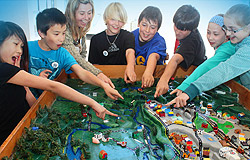 |
| Our kids are our future! To inspire a stewardship ethic and promote interest in our water resources, the DWWP program provides educational experiences for school groups across our region. These include watershed field trips, classroom presentations and teacher workshops. | |
| P1 Team WaterSmart |  |
| Everyone can take actions that make a difference to protect and conserve our water. Team WaterSmart is our community outreach initiative that promotes education and awareness about our water resources. This site gives helpful suggestions and you can find our friendly staff hosting free workshops across our region and displaying an interactive booth at community events during the spring/summer. | |
| P2 Community Watershed Monitoring |  |
| Partnerships with local stewardship groups and the Ministry of Environment enable the monitoring of our streams, to gather useful water quality data and assess trends in the health of our watersheds. | |
| P2 Water Budget | 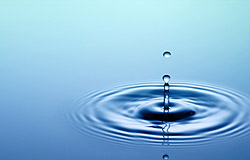 |
| How much water is stored in our lakes, streams and aquifers? How does water move between these elements? Where is water being taken or used? These regional studies begin to answer these questions. Ongoing data collection and analysis is required with this phased project. | |
| P2 Nanoose (Area E) Water Monitoring Program | 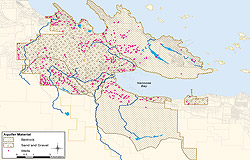 |
| Area E residents value a sustainable water supply. To ensure that the water resource is shared equitably amongst the water users in Area E, the Water Monitoring Program will increase data collection of groundwater levels, streamflow, precipitation and water quality to help improve understanding of water availability and assist with decision making on the land base. | |
| P2 & P7 Hydrometric and Climate Monitoring |  |
| Gathering local data on streamflow, stream level, precipitation and snowpack helps fill gaps in Federal and Provincial monitoring networks. This localized monitoring assists in improving our understanding of the dynamics of regional water resources, and the data can be used in more rigorous regional assessments. This expanded local monitoring is achieved with partnerships and is implemented on a priority basis, to gather long term data for tracking trends over time | |
| P2 Groundwater Monitoring | 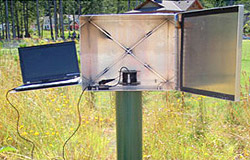 |
| Tracking groundwater levels in our region is important to our understanding of the resource. Under the DWWP program, several new observation wells have been added to the provincial monitoring network. Additionally, well owners across our region have volunteered their wells for groundwater level monitoring to add to the pool of data. | |
| P1 Small Water Systems | 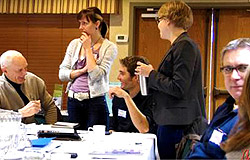 |
| Across the RDN there are many water purveyors that operate small water systems to provide water to the public. The DWWP program has established a working group for these operators to gain more knowledge and access to resources to better manage their small water systems. | |
| P5 Water Use Reporting Centre |  |
| You can't manage what you don't measure! For water utilities, water purveyors and large water users, this web-based system helps in recording and tracking water use data. It is a management and reporting system that was first piloted by the Okanagan, and is now being launched in the RDN. | |
| P7 Academic Partnerships |  |
| Teaming up with Universities is a great way to support water studies in our region. This is a new initiative of the DWWP program, as we aim to bridge academia with local water understanding and management. | |
| P7 Drought Response 2015 | 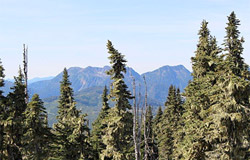 |
| Due to unseasonably warm and dry conditions, that we experienced earlier than usual in 2015, our region had to respond to stressed water supplies and increased water demand. Lack of snowpack, reduced rainfall and warm temperatures impacted streamflows, reservoir levels and groundwater availability, as the Province designated Vancouver Island as "Level 4 Drought: Extremely Dry Conditions" for a longer duration and earlier than ever before. Here is how we responded in our region. | |
Didn't find what you were looking for? Past Projects: click here.
